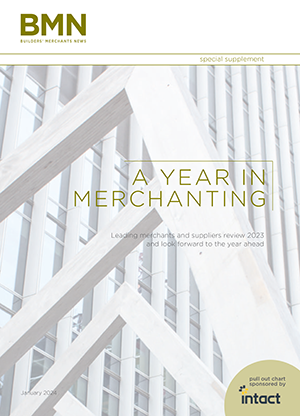Every working day, two construction workers take their own life - and nearly 400,000 days are lost every year due to poor mental health. Every company has a moral obligation to embrace and develop a culture to improve the industry’s mental health, and our work is just beginning. Bill Hill, CEO of The Lighthouse Construction Charity, explains how you can build a positive mental health culture in your organisation.
Recent research has put the mental health of our industry as a high priority. The problem seems to be that many feel that the subject matter is too complex and either don’t know how to start a programme of education or in some cases are concerned that they will be overwhelmed by the issues that may arise.
The Considerate Constructors Scheme has already instigated a points structure to recognise the importance of good mental health on site and it can be expected that in future, all client tenders will require evidence of initiatives relating to improving mental health. There is even talk of legislation to govern the number of Mental Health First Aiders in proportion to the number of workers on larger sites. If that’s not convincing enough, the potential productivity gains to be made by reducing the number of days off work due to stress, anxiety or depression gives a sound commercial imperative. There’s a wealth of knowledge and experience out there, but it can be difficult to pull all the information that you want together. So how can you get started?
With support from our industry experts, we have developed an online portal of information about mental health - www.buildingmentalhealth.net. this can help you start and develop the process of building a positive mental health culture in your organisation. The contributors are simply a group of volunteers who have shared their industry knowledge and experience and pooled together the latest thinking and best practice. From tool box talks that you can download through to advice on how to access mental health training, all the information is free of charge, copyright free and can be tailored to your needs.
5 Steps to better mental health
Step 1: Senior Management commitment. To undertake an improvement project of this nature it is essential to demonstrate a commitment to improve the welfare of the workforce.
Best Practice – Senior Management should sign a charter of improvement and make this public for all to see.
Step 2: Adopt an Employee Assistance Programme (EAP). There are many schemes offering a range of benefits for employees and t most offer a confidential helpline to discuss mental health issues and offer counselling. If individuals are introduced at an early stage, the outcomes are very positive. Clearly communicate what you EAP scheme offers, it’s pointless having a great scheme if nobody knows about it. If you don’t have the resources to introduce your own EAP scheme then order some Construction Industry Helpline cards and posters from the Lighthouse Construction Industry Charity or the Considerate Constructors Scheme. As well as communicating the charity’s 24/7 helpline number, the packs also provide a list of other helpline numbers for issues including bereavement, relationships, cancer support and financial advice.
Best Practice – Consolidate your EAP information – When working on a site with multiple subcontractors, get all the company’s EAP scheme information onto one card. If you don’t have a scheme, publicise the Construction Industry Helpline.
Step 3: Prepare a ‘Tool Box’ talk to raise awareness of good mental health. The presentation needs to be under one hour long and should be interactive. Our objective is to get our workforce to talk to each other and recognize when somebody is struggling.
Best Practice – Deliver your ‘Tool Box talk’ to all your employees and subcontractors. There is also a self-paced online course available through the Considerate Constructors Scheme.
Step 4: In-depth Mental Health training for people managers. This training is often a half day course and not only helps identify the signs and symptoms of mental illness but also gives training on how to handle the conversation and where to signpost for help.
Best Practice – Many organisations offer this training but the only one accredited by the CITB is the Mental Health First Aid England course. Companies registered for the levy can claim back the material costs.
Step 5: Mental Health First Aiders. At some point in the future there may well be legislation to ensure a set number of Mental Health First Aiders on site in proportion to the number of workers. A ratio of one Mental Health First Aider to every one hundred workers has been suggested.
Best Practice – The Mental Health First Aid England two-day intensive course is currently the only course accredited by the CITB. The industry recognises that if there is a huge uptake in this initiative then there will be a shortage of training courses but the good news is that the CITB are ready to respond and there may be announcements of an accelerated programme being released soon.
If you can complete the above steps then you will have a robust mental health programme. But, there is always room for improvement and the best practice here is to share your knowledge and experiences and look out for other company’s best practice. Again, the Considerate Constructors Scheme offers free access to their best practice hub and have a range of case studies on this subject.
It is vitally important that, as an industry we all do something to improve the mental health of our workforce. Let’s shoulder this moral responsibility and start making a difference today.
More detailed information about building positive mental health in your organisation can be found at www.BuildingMentalHealth.net/resources.









